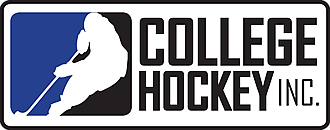Monday, December 6, 2010
Keep Your Options Open
Hockey’s best players learn at an early age to keep their options open when the puck is on their stick, and College Hockey Inc’s goal is to help the sport’s best young players keep their options open about their future.
The non-profit organization, operated under the auspices of the Hockey Commissioners Association (HCA), debuted last December and one of its primary missions is to educate prospective student-athletes on the benefits of pairing a college education with their passion for hockey. Staff members have spent the past year traveling across North America making presentations to elite young players and their families.
Parents are more interested in the substance of the message, such as how to catch the attention of college coaches, how to get admitted and get a scholarship, and the value of education. Players are more focused on whether they’ll have a chance to develop their hockey skills and have a shot at playing in the NHL.
According to current Chicago Blackhawks captain and former University of North Dakota star Jonathan Toews, playing college hockey was “obviously the best step I could have taken to get to the next level.”
It’s a message that more and more players, and their parents, are heeding. Stephane Robidas, an alternate captain for the Dallas Stars, volunteered to speak to a group of 75 players at the American Airlines Center. He acknowledged that he had played major junior hockey, and that choice had worked out for him, but based on everything he has learned now, he told the players that he and his wife hope that if their young son is good enough that he’ll eventually play college hockey.
Paul Kelly, executive director of College Hockey Inc., wants players to be able to make the most informed decision possible and understands that it’s hard for 15-year-olds to hear that the average NHL career lasts less than five years.
“We tell them there are more guys that have gone on to become successful doctors, lawyers, entrepreneurs and scientists that played college hockey than players who went on to become NHL superstars,” Kelly said. “The reality is that hockey ends at some point, but education lasts a lifetime.”
Included in the organization’s efforts have been four “collegiate hockey summits” held in Los Angeles, Dallas, Ann Arbor, Mich., and Rochester, N.Y. Each was an invitation-only gathering of the area’s top 1994 and 1995 birth-year players; participants heard from current NHL players and college alums such as Jack Johnson, Marty Turco and Nathan Gerbe at the events, which were cohosted by USA Hockey and the USHL.
College Hockey Inc. expanded its outreach to Canada in September by hosting a summit in Toronto. The participants, split into four teams, were coached by former NHL/college players like Pat Flatley, Mike Johnson and Cam Stewart. They also heard presentations about college hockey and career options from NHL administrators and players, along with prominent college head coaches like Red Berenson (Michigan), Dave Hakstol (North Dakota) and Seth Appert (Rensselaer).
College Hockey Inc. received an outpouring of positive feedback afterwards, including an e-mail from a parent which read “If [my son] learned nothing else, he went home Saturday and did an hour of homework before his game Saturday night, and again on Sunday – his new catchphrase is ‘Don’t blow my eligibility.'”
According to Kelly, that sentiment is something that a multitude of former NHL and junior hockey players wish they had experienced growing up.
“In the crowds of people, there have been a number of guys who either played professional hockey or played junior hockey, who commonly come up to us afterward and say, ‘Geez, I wish there was something like this when I was young that could have helped me kind of look at the options and decide,'” Kelly said.
The best players still know it’s wise to keep one’s options open, off the ice as well as on.
This story originally appeared in the Dec. 6, 2010, issue of The Hockey News.
